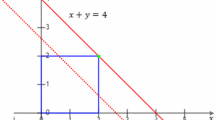Abstract
Classic task models for real-time systems focus on execution windows expressing earliest start times and deadlines of tasks for feasibility. Only within these windows the execution of tasks is feasible, and it is considered of uniform utility.
Some tasks, however, have target demands in addition: a task should preferably execute at a specific target point within its execution window, but can execute around this point, albeit at lower utility. Examples of such applications include control and media processing.
In this paper, we present a task model based on a gravitational analogy to address these issues. Tasks are considered as massive bobs hanging on a pendulum: a single task, left to itself, will execute at the bottom, the target point. If a force, such as the weight of other tasks, is applied, it can be shifted around this point. Thus, tasks’ importance and their utility around target points can be expressed. Since the execution of a task cannot be mapped to a point in time, the model allows tasks to express an arbitrary point with its execution to represent the whole execution. This point is called the anchor point.
Moreover, we show an example of a scheduling algorithm for this model which finds an approximation to the best compromise of tasks’ interests based on the equilibrium state of a pendulum. Nonetheless, this task model is not restricted to a particular scheduling algorithm.
Results from a simulation study show the effectiveness of the approach.
Similar content being viewed by others
References
Baruah S, Buttazzo G, Gorinsky S, Lipari G (1999) Scheduling periodic task systems to minimize output jitter. In: RTCSA ’99: Proceedings of the sixth international conference on real-time computing systems and applications, Washington, DC, USA, 1999. IEEE Computer Society, Washington, p 62
Bülbül K, Kaminsky P, Yano C (2007) Preemption in single machine earliness/tardiness scheduling. J Sched 10(4–5):271–292
Buttazzo GC (2004) Hard real-time computing systems: Predictable scheduling algorithms and applications (real-time systems series). Springer TELOS, Santa Clara
Buttazzo GC, Lipari G, Caccamo M, Abeni L (2002) Elastic scheduling for flexible workload management. IEEE Trans Comput 51(3):289–302
Chen K, Muhlethaler P (1996) A scheduling algorithm for tasks described by time value function. Real-Time Syst 10(3):293–312
Guerra R, Fohler G (2008) A gravitational task model for target sensitive real-time applications. In: ECRTS08—20th euromicro conference on real-time systems, Prague, Czech Republic, July 2008
Isovic D, Fohler G, Steffens LFM (2003) Timing constraints of MPEG-2 decoding for high quality video: misconceptions and realistic assumptions. In: 15th euromicro conference on real-time systems (ECRTS 03), Porto, Portugal, July 2003
Jensen ED (1992) Asynchronous decentralized real-time computer systems. In: Halang WA, Stoyenko AD (eds) Real-time computing, the NATO Advanced Study Institute. Springer, Berlin
Li P (2006) A utility accrual scheduling algorithm for real-time activities with mutual exclusion resource constraints. IEEE Trans Comput 55(4):454–469
Li P, Ravindran B, Jensen ED (2004) Adaptive time-critical resource management using time/utility functions: Past, present, and future. In: COMPSAC ’04: Proceedings of the 28th annual international computer software and applications conference—workshops and fast abstracts (COMPSAC’04), Washington, DC, USA, 2004. IEEE Computer Society, Washington, pp 12–13
Locke CD (1986) Best-effort decision-making for real-time scheduling. PhD thesis, Pittsburgh, PA, USA
Marti P, Fohler G, Ramamritham K, Fuertes JM (2001) Jitter compensation in real-time control systems. In: Proceedings of the 22nd IEEE real-time systems symposium, London, UK, Dec 2001
Prasad D, Burns A, Atkins M (2003) The valid use of utility in adaptive real-time systems. Real-Time Syst 25(2–3):277–296
Sun W, Yuan Y-X (2006) Optimization theory and methods, vol 1. Springer, Berlin
Wang J, Ravindran B (2004) Time-utility function-driven switched Ethernet: Packet scheduling algorithm, implementation, and feasibility analysis. IEEE Trans Parallel Distrib Syst 15(2):119–133
Wu H, Balli U, Ravindran B, Jensen ED (2005) Utility accrual real-time scheduling under variable cost functions. In: RTCSA ’05: Proceedings of the 11th IEEE international conference on embedded and real-time computing systems and applications (RTCSA’05), Washington, DC, USA, 2005. IEEE Computer Society, Washington, pp 213–219
Wu H, Ravindran B, Jensen ED, Li P (2006) Energy-efficient, utility accrual scheduling under resource constraints for mobile embedded systems. Trans Embed Comput Sys 5(3):513–542
Author information
Authors and Affiliations
Corresponding author
Additional information
This is an extended version of the ECRTS’08 paper (Guerra and Fohler 2008).
The work presented in this paper has been supported in part by the EU IST project FRESCOR (FP6/2005/IST/5-034026).
Rights and permissions
About this article
Cite this article
Guerra, R., Fohler, G. A gravitational task model with arbitrary anchor points for target sensitive real-time applications. Real-Time Syst 43, 93–115 (2009). https://doi.org/10.1007/s11241-009-9074-9
Published:
Issue Date:
DOI: https://doi.org/10.1007/s11241-009-9074-9




